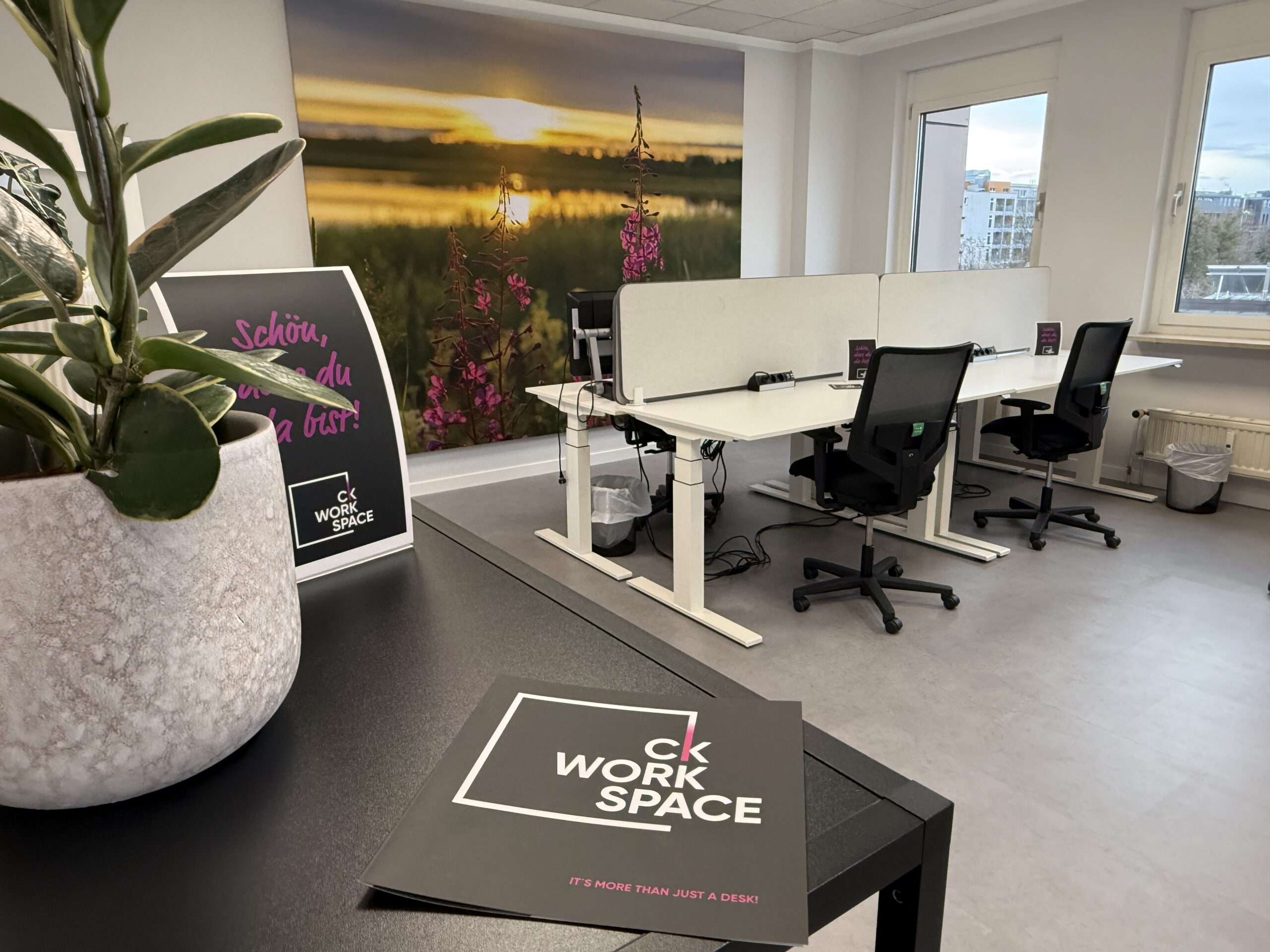Prolonged sitting, poor posture, back pain - modern office life takes its toll. While many companies focus on technological innovations, one crucial factor often goes unnoticed: Ergonomic office furniture. It is not just a question of comfort, but can have a direct impact on health and productivity.
But why is ergonomic office furniture so important? A workplace that adapts to the individual needs of employees reduces health complaints, increases the ability to concentrate and promotes efficiency. Coworking spaces and other offices that rely on high-quality, ergonomic solutions (such as our CK Workspace) benefit from happier, more motivated customers and/or employees!
What speaks for this?
For decades, sitting was considered unproblematic - but recent studies show the opposite. Anyone who spends eight hours or more a day sitting on an unsuitable chair risks long-term damage to the spine, joints and muscles. Sitting incorrectly often leads to tension, back pain and circulatory problems.
This is where ergonomic office furniture comes into play. Height-adjustable desks, flexible seating options and specially shaped chairs help to reduce strain on the body. An ergonomic workstation not only improves posture, but also makes it possible to switch between different positions - a decisive factor for long-term health and well-being.
But ergonomic office furniture is not just a question of physical health. An optimally furnished workplace also increases mental performance. People who feel comfortable work more focused and more productively. Regular movement, a varied sitting position and a pleasant environment promote concentration and reduce stress. Ergonomic office furniture is therefore not a luxury purchase, but a sustainable investment in performance!
What makes good ergonomic office furniture?
Not every chair or desk can be described as "ergonomic". High-quality ergonomic office furniture is characterized by a few key features:
- Individual adaptability: Everyone is different. Height-adjustable desks and chairs should be adaptable to different body sizes and working styles.
- Dynamic sitting: Modern office chairs encourage movement. They have flexible seating surfaces, adjustable backrests and allow you to actively switch between different sitting postures.
- Support for natural posture: a lumbar support, adjustable armrests and a well-padded seat help to prevent poor posture and reduce tension.
- Height-adjustable desks: Alternating between sitting and standing prevents strain, improves circulation and reduces fatigue.
Many offices rely on cheap office furniture to save costs. But these short-term savings can be costly in the long term - through increased sickness absence, reduced productivity and dissatisfied customers or employees. The best strategy is to invest directly in high-quality ergonomic solutions. Less pain, better posture and increased energy make everyday working life more pleasant.
